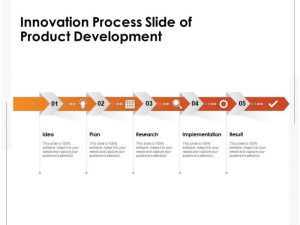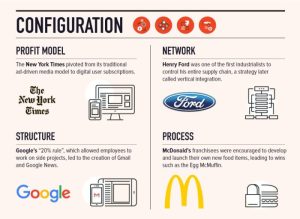Cultivating a thriving corporate culture that fuels product innovation is no longer a luxury; it’s a necessity in today’s rapidly evolving market. This exploration delves into the intricate relationship between organizational culture and the creation of groundbreaking products, examining leadership styles, team dynamics, and strategic processes that drive successful innovation. We’ll uncover how fostering a climate of risk-taking, collaboration, and continuous improvement can transform a company’s ability to conceive, develop, and launch market-leading products.
From defining the characteristics of an innovation-friendly culture to measuring the return on investment of innovative initiatives, we will navigate the key aspects of building a sustainable ecosystem for product development. This includes practical strategies for empowering teams, implementing effective processes, and adapting to market changes. The journey will reveal how a well-defined culture can not only enhance product quality but also cultivate a highly engaged and motivated workforce.
Defining a Culture of Innovation
A culture of innovation isn’t simply about having a dedicated R&D department; it’s a fundamental shift in how an entire organization approaches its work. It’s about embedding a mindset of continuous improvement and creative problem-solving into the very fabric of the company. This involves empowering employees at all levels, fostering collaboration, and embracing calculated risks. Ultimately, a culture of innovation translates into a more agile, adaptable, and competitive business.A culture that genuinely fosters product innovation is characterized by several key traits.
Open communication and a willingness to share ideas are paramount. Employees feel comfortable expressing their thoughts, even if they are unconventional or challenge the status quo. Furthermore, a strong emphasis on learning and development ensures that the workforce possesses the skills and knowledge to innovate effectively. Failure is viewed not as an endpoint but as a valuable learning opportunity, encouraging iterative development and continuous improvement.
Finally, leadership actively champions innovation, providing the necessary resources and support to make it a reality.
Essential Elements of a Successful Innovation Strategy
A successful innovation strategy isn’t a standalone initiative; it’s deeply intertwined with the company culture. It needs to be clearly defined, communicated, and consistently reinforced across all departments. Key elements include establishing clear goals and metrics for innovation, allocating sufficient resources (financial, human, and technological), and building a robust process for idea generation, evaluation, and implementation. Regular feedback mechanisms are crucial to monitor progress and make necessary adjustments.
Furthermore, the strategy should encourage collaboration across different teams and departments, breaking down silos and fostering cross-functional synergy. Finally, a culture of continuous learning and adaptation is essential to ensure the strategy remains relevant and effective in a dynamic market.
Risk Tolerance and Experimentation
A culture of innovation necessitates a high degree of risk tolerance. Employees must feel empowered to experiment with new ideas, even if they might fail. This requires a shift from a blame-oriented culture to one that celebrates learning from mistakes. Experimentation is encouraged through the implementation of A/B testing, prototyping, and pilot programs. These allow for the testing of new concepts and approaches on a smaller scale, minimizing potential risks while gathering valuable data.
Moreover, creating a “safe-to-fail” environment is crucial. This means establishing clear guidelines for acceptable risk-taking, providing support and resources for employees to learn from failures, and celebrating the effort and learning even when projects don’t succeed. This fosters a culture where experimentation is not only tolerated but actively encouraged.
Comparison of Innovation-Stifling and Innovation-Promoting Cultures
The following table highlights the key differences between cultures that stifle innovation and those that promote it:
| Characteristic | Innovation-Stifling Culture | Innovation-Promoting Culture | Illustrative Example |
|---|---|---|---|
| Communication | Hierarchical, limited feedback, fear of dissent | Open, transparent, encourages diverse perspectives | In a stifling culture, junior employees might hesitate to share new ideas with senior management; in a promoting culture, open forums and brainstorming sessions are common. |
| Risk Tolerance | Risk-averse, fear of failure, punishes mistakes | Embraces calculated risks, views failure as a learning opportunity | A stifling culture might reject a new product idea due to perceived risks, while a promoting culture would pilot the product on a small scale before wider release. |
| Leadership Style | Authoritarian, top-down decision-making, micromanagement | Empowering, collaborative, supports employee autonomy | In a stifling culture, leadership dictates the direction; in a promoting culture, leaders encourage employees to contribute their ideas and take ownership of projects. |
| Learning & Development | Limited investment in training, resistance to change | Prioritizes continuous learning, encourages adaptation | A stifling culture might resist adopting new technologies, while a promoting culture invests in employee training and upskilling to embrace new advancements. |
Ultimately, fostering a corporate culture that champions product innovation is a multifaceted endeavor demanding strategic planning, effective leadership, and a commitment to continuous improvement. By understanding and implementing the principles Artikeld here – from nurturing collaborative team dynamics to establishing robust processes for idea generation and evaluation – organizations can unlock their innovative potential, creating a sustainable competitive advantage and driving significant growth.
The path to successful product innovation is not solely about technological advancements but fundamentally about cultivating a supportive and empowering environment where creativity thrives.
Essential FAQs
What role does employee feedback play in fostering a culture of innovation?
Employee feedback is crucial. It provides valuable insights into existing processes, identifies areas for improvement, and helps shape future innovation strategies. Regular feedback mechanisms, such as surveys and suggestion boxes, are essential for creating a culture where employees feel heard and valued.
How can companies avoid groupthink when brainstorming new product ideas?
Techniques like the Nominal Group Technique (NGT), where individuals generate ideas independently before group discussion, can help mitigate groupthink. Encouraging diverse perspectives and actively soliciting dissenting opinions are also crucial strategies.
What are some common mistakes companies make when implementing innovation strategies?
Common mistakes include insufficient resource allocation, lack of clear goals and metrics, failure to integrate innovation into the overall business strategy, and neglecting employee engagement and feedback.






